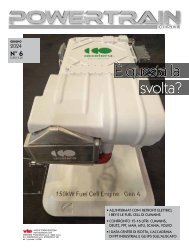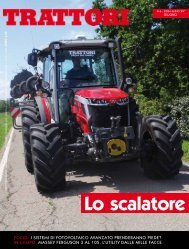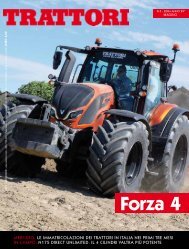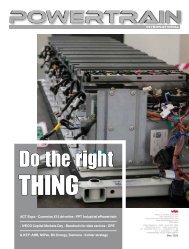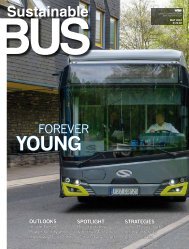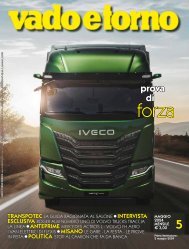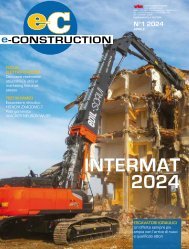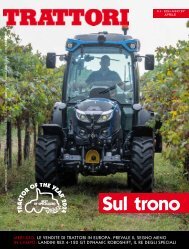SUSTAINABLE BUS 2-2023
Topics? A clear picture of fundings available for zero emission buses in UK, an insight on the fuel cell bus market, a glimpse of the largest electric bus fleet in Middle East (hint: Mowasalat). Again: focus on safety precautions in H2 bus depots, a commentary on the market for second hand e-buses (and battery residual value). Finally: technical presentations of VDL Citea new generation (cover story!), Iveco Bus Crossway LE CNG, Rampini Hydron (and new zero emission bus range)
Topics? A clear picture of fundings available for zero emission buses in UK, an insight on the fuel cell bus market, a glimpse of the largest electric bus fleet in Middle East (hint: Mowasalat). Again: focus on safety precautions in H2 bus depots, a commentary on the market for second hand e-buses (and battery residual value).
Finally: technical presentations of VDL Citea new generation (cover story!), Iveco Bus Crossway LE CNG, Rampini Hydron (and new zero emission bus range)
Create successful ePaper yourself
Turn your PDF publications into a flip-book with our unique Google optimized e-Paper software.
IN THE SPOTLIGHT<br />
VDL CITEA NEW GENERATION<br />
STARK CHOICE<br />
The new VDL Citea family is only<br />
electric. It is powered by ZF hub<br />
motors and propelled by battery<br />
modules in the floor (a novelty!).<br />
Construction concept stands out<br />
Long awaited, last September at Innotrans the<br />
new VDL Citea range was unveiled, represented<br />
by a first 12.2-metre demo exhibited<br />
on the Bus Display. The announcement dates<br />
back to the end of 2020, the online presentation was<br />
in mid-2021. Meanwhile, 2020 and 2021 saw the<br />
Dutch manufacturer at the bottom of the top electric<br />
bus players ranking in Europe, overtaken by Solaris<br />
which closed both years as the market leader. A situation<br />
reversed in the first half of 2022, with VDL in<br />
first place with 242 deliveries and a 13 per cent share<br />
in the overall e-bus market. (Editor’s note: complete<br />
data for the whole 2022 are not yet available at the<br />
time of publishing. They will be subject of an ad hoc<br />
report on the next issue).<br />
Let’s get to the product. Battery modules placed on<br />
the floor (an absolute novelty) and the structure of the<br />
sidewalls in monoblocks made of composite material<br />
stand out. VDL’s partnership with ZF is also noteworthy,<br />
with the axle electrified by hub motors to oust the<br />
historic partner Siemens. Finally, among the most relevant<br />
aspects, there is passenger capacity: the version<br />
with standard capacity battery (306 kWh) can accommodate<br />
110 people.<br />
28<br />
In the name of e-mobility<br />
The new VDL city bus family is the result of a project<br />
entirely developed around the electric driveline. Full<br />
low floor and no engine tower are just a couple features<br />
of a range developed, insists the manufacturer,<br />
starting from scratch and with the declared intention<br />
of making the most of the possible benefits of electric<br />
traction without handing down, at the same time, the<br />
result of a construction tradition based on combustion<br />
engines. For the first time, as anticipated above,<br />
the new Citea houses the batteries in the floor (in the<br />
standard 306 kWh version). The maximum battery<br />
capacity is 490 kWh, with the kWhs exceeding 306<br />
Battery modules placed<br />
under the floor (an absolute<br />
novelty) and the structure<br />
of the sidewalls in monoblocks<br />
made of composite<br />
material stand out. VDL’s<br />
partnership with ZF is also<br />
noteworthy.<br />
29




